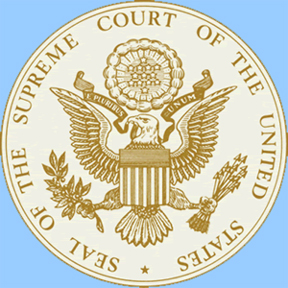U.S. Supreme Moot Court
Wisconsin v. PlentywolfFebruary 26-March 6, 2007 / U.S. Supreme Court, Washington, D.C.

On the docket:
Wisconsin v. Plentywolf
A Wisconsin man conducts his religious ceremonies with bears in close proximity with the faith's adherents. The Wisconsin DNR believes that this ritual is unsafe and unlawful. Does the state have a compelling reason to limit Plentywolf's right to free exercise of religion? Or does the state even need one?Use the following links help you develop your arguments and questions-
General Supreme Court and Precedent Links-
Oyez, Supreme Court Multimedia
Findlaw
Landmark Cases
FedWorld
Wisconsin Circuit Court
Applicable Federal and State Law-
Wisconsin Law-
Wisconsin Statutes & Annotations
Wisconsin DNR Administrative Code, Chapter 16
Wisconsin Captive Animal Farm License Application
Federal Law and Pertinent Legislation-
Federal Regulation on Animal Handing, USDA
The Religious Freedom Restoration Act
Supplementary Links on Case Content-
Guide to Safeguard Lakota Tradition and Spirituality *
Lakota Spirituality
Information on the American Black Bear* The summary for this moot court is offered for public viewing here. The content of the bear ceremony in this fictitious case as it corresponds to animal use in actual Lakota religious traditions is not factual. This moot court case is based on the facts and decision of a Pennsylvania appeals court case, Black Hawk v. Pennsylvania, where a Lakota man challenged the state on First Amendment grounds dealing with the use of bears in his individual ceremonies under the auspices of Lakota tradition. Modifications (regarding distances between bear and adherent) made to this ceremony are only utilized to facilitate the right of the free religious exercise issue as it pertains to Wisconsin law. Any similarities described in this fictitious case with actual bear-human interactions in any bona fide religious Lakota activities is purely coincidental. The goal of this simulation is two-fold: to investigate the free exercise clause of the First Amendment with a Wisconsin-formatted fictitious case that would interest students and to throw light on true Lakota traditions that would otherwise often go unmentioned in today's public school system. Comments to the author: Mr. Jason Hollenberger
Law
River Valley High School
Mr. Hollenberger(2/18/07 jph)